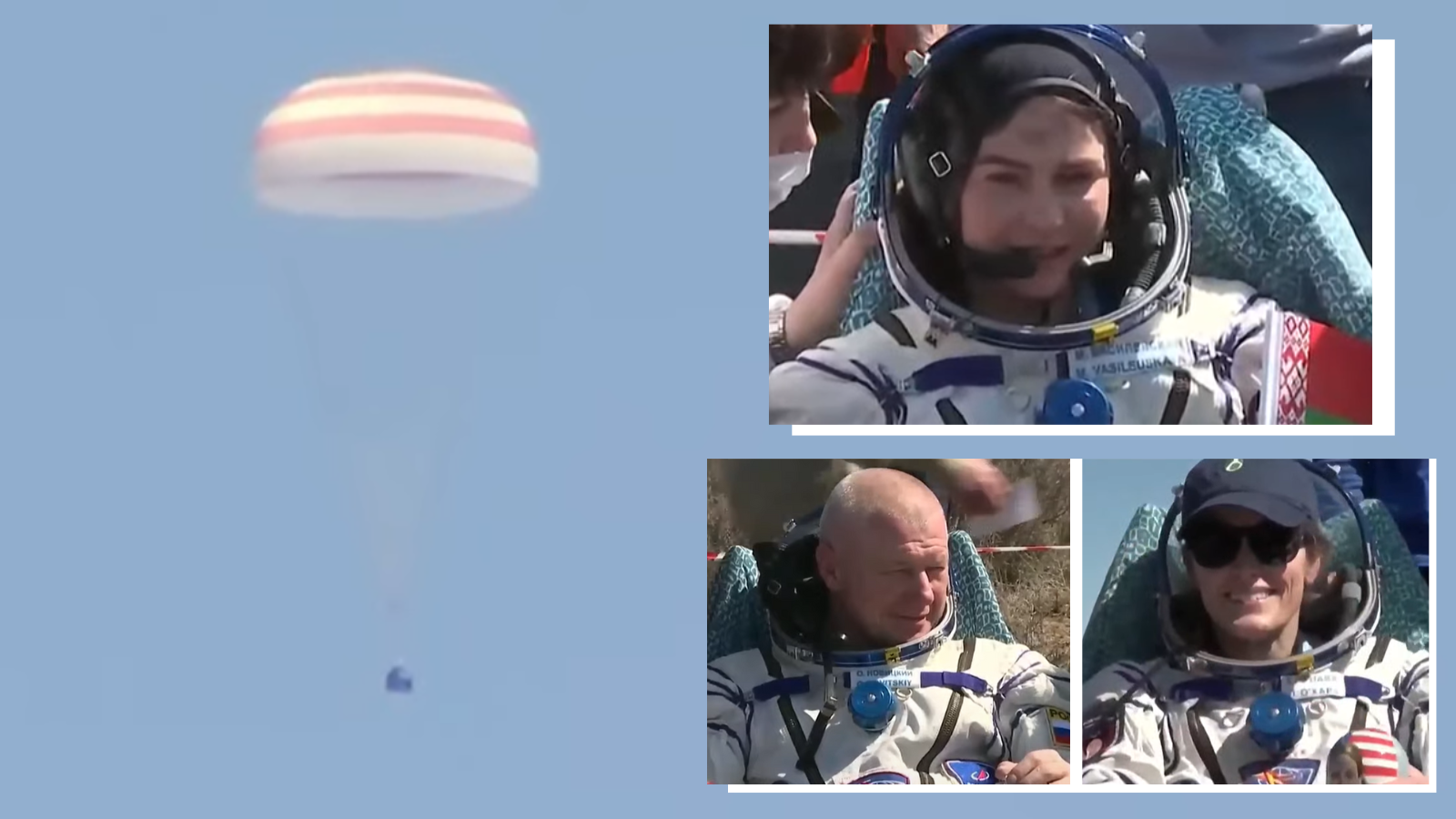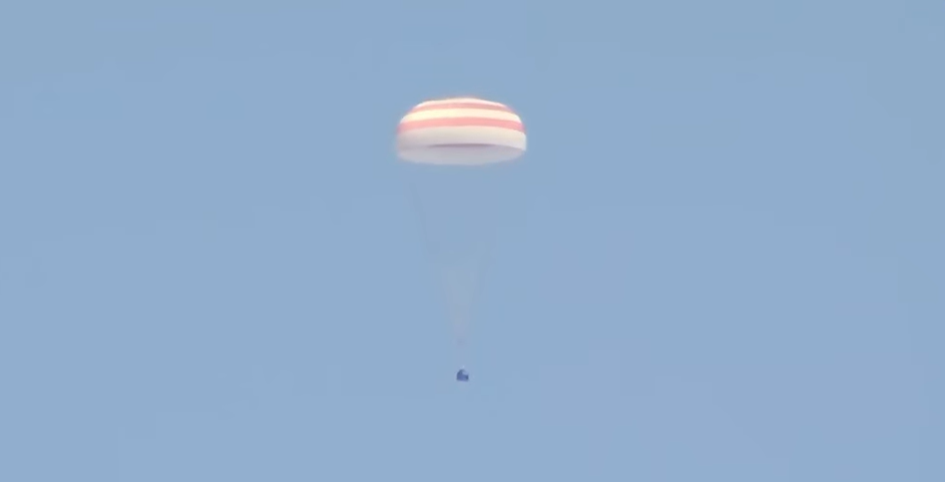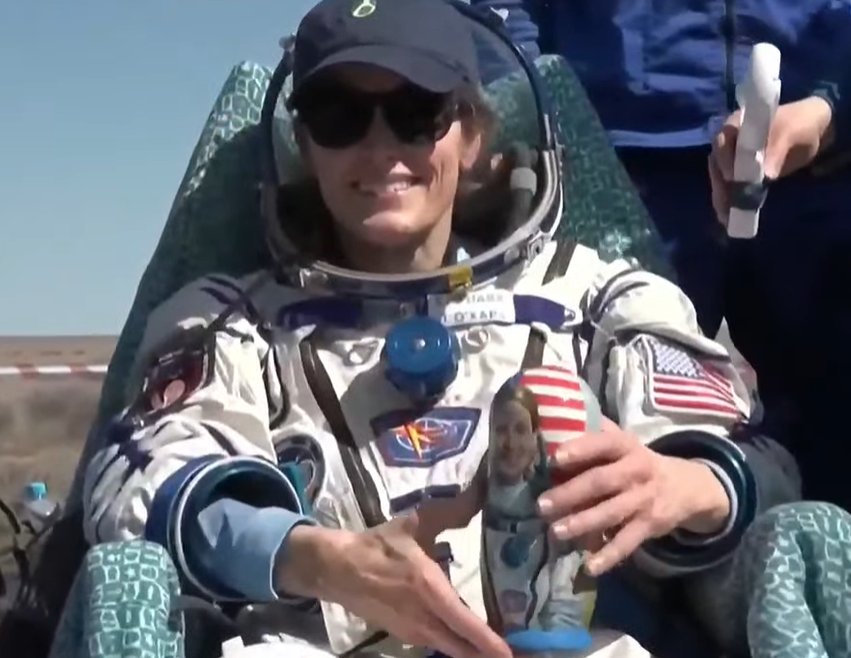Soyuz capsule with crew of 3, including 1st female astronaut from Belarus, lands safely to end ISS mission
The trio touched down in Kazakhstan today (April 6) at 3:18 a.m. ET.

The first female Belarusian in space, alongside a NASA astronaut and a Russian cosmonaut, came back to Earth early this morning (April 6).
A Rusian Soyuz spacecraft carrying NASA astronaut Loral O'Hara, Roscosmos cosmonaut Oleg Novitskiy, and spaceflight participant Marina Vasilevskaya of Belarus landed near Karaganda, Kazakhstan at 3:17 a.m. EDT (0717 GMT; 12:17 p.m. local Kazakhstan time), about 3.5 hours after departing the International Space Station (ISS) at 11:54 p.m. EDT (0354 GMT) on Friday April 5.
O'Hara, selected by NASA in 2017, and Vasilevskaya were both on their first missions. Novitskiy had already conducted three long-duration missions aboard the ISS: Expeditions 33/34 in 2012-13, Expeditions 50/51 in 2016-17 and Expeditions 64/65 in 2021.
Related: 3 spaceflyers arrive at the ISS aboard Russian Soyuz spacecraft
Novitskiy, Vasilevskaya and NASA astronaut Tracy Caldwell Dyson lifted off from Kazakhstan on March 23 aboard a different Soyuz. Their launch came after a rare abort of a Soyuz rocket two days before, which was traced to a battery issue that was swiftly resolved. O'Hara, meanwhile, launched on yet another Soyuz last September, spending 204 days in space before coming home today.

Belarus is a military ally of Russia, particularly after the latter's internationally condemned invasion of Ukraine in 2022 that is still ongoing. Belarus was thus invited by Russia for a short-term ISS mission. (NASA and other space agencies severed most of their relationships with Russia after the invasion, but the nation's participation in the ISS program program continues more or less unchanged.)

Flight attendant Vasilevskaya, 33, won her seat through the Belarus Academy of Sciences and Belarus Space Agency after a nationwide contest that attracted 3,000 applicants. She and six other finalists were considered for the flight; when Vasilevskaya was chosen, her backup was 28-year-old pediatric surgeon Anastasia Lenkova.
Breaking space news, the latest updates on rocket launches, skywatching events and more!
"I'm overwhelmed with emotions. It's something incredible," Vasilevskaya said immediately after being lifted from the Soyuz capsule. "I wish all people on Earth to treasure and cherish what they have because it is precious.
"We wanted to stay longer [on the ISS], but it is great to be back."

Each of the crew members was showered with gifts after being lifted from the Soyuz capsule including Matryoshka dolls, or stacking dolls, bearing their likenesses.
Vasilevskaya is the first citizen of the Republic of Belarus to reach space. Pyotr Klimuk and Vladimir Kovalyonok, however, were both from the former Belarus Soviet Socialist Republic (SSR) and flew to space for the first time in 1973 and 1977, respectively. (Belarus and a number of other former Soviet states became independent after the USSR collapsed in the early 1990s.)
The Soyuz MS-25 spacecraft, which carried Vasilevskaya, O'Hara and Novitskiy to orbit about two weeks ago, is still docked to the ISS. It will come back in the fall with Dyson and cosmonauts Oleg Kononenko and Nikolai Chub, after the Russians complete a year in space.
The space station is also currently host to the SpaceX Crew-8 Dragon spacecraft with the remaining astronauts of Expedition 71: NASA astronauts Matthew Dominick, Michael Barrett and Jeannette Epps and cosmonaut Alexander Grebenkin. They launched on March 4 for an expected half-year stay in space.

Elizabeth Howell (she/her), Ph.D., was a staff writer in the spaceflight channel between 2022 and 2024 specializing in Canadian space news. She was contributing writer for Space.com for 10 years from 2012 to 2024. Elizabeth's reporting includes multiple exclusives with the White House, leading world coverage about a lost-and-found space tomato on the International Space Station, witnessing five human spaceflight launches on two continents, flying parabolic, working inside a spacesuit, and participating in a simulated Mars mission. Her latest book, "Why Am I Taller?" (ECW Press, 2022) is co-written with astronaut Dave Williams.
